
Roots
In the quiet hours, as the world settles into slumber, a silent guardian has long attended to our crowns. For generations, the delicate coils and curls that adorn us have sought refuge from the night’s subtle abrasion, finding solace in the embrace of thoughtfully chosen coverings. This ancient wisdom, often passed down through whispered traditions and lived experience, speaks to a deep, intuitive knowing about the vulnerability of our hair as we rest.
The fibers we choose for our nighttime wraps and coverings hold within them stories of protection, preservation, and the enduring human desire to nurture what is precious. It is a journey into the very foundation of hair care, an exploration of how materials from nature offered respite and sustained the beauty of diverse textures through the ages.
Understanding the historical significance of these fabrics first requires a gentle look at the very structure of textured hair itself. Our coils and curls, with their unique helical shapes and often flatter, elliptical cross-sections, present a distinct set of considerations when it comes to friction and moisture retention. Unlike straight strands that may glide more easily against surfaces, the intricate architecture of textured hair means it possesses more points of contact and, therefore, greater potential for mechanical stress. This inherent characteristic, a marvel of natural design, also renders it more susceptible to tangling, breakage, and moisture loss, especially during the hours of unconscious movement as we sleep.
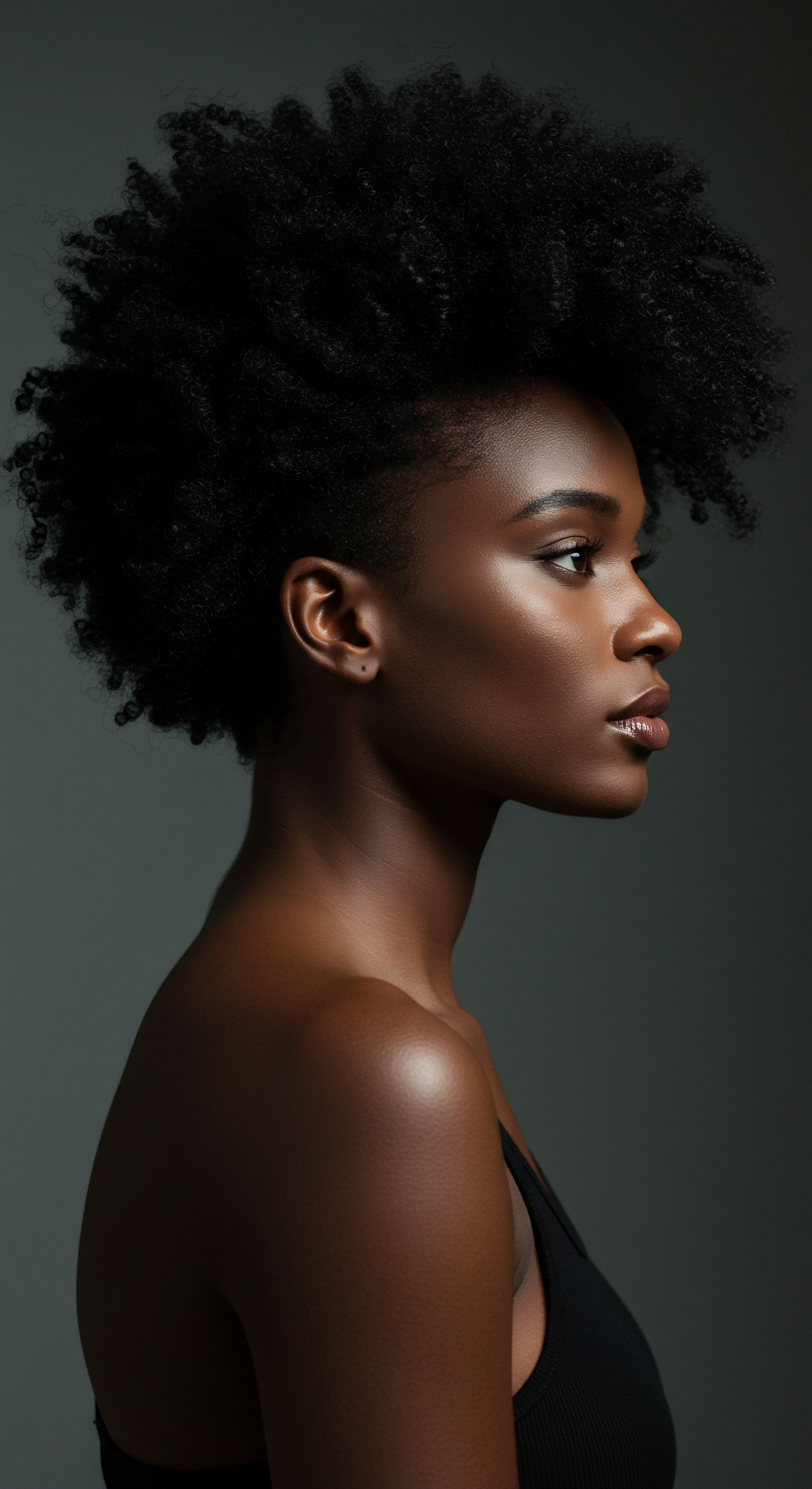
The Delicate Architecture of Textured Hair
Each strand of hair, regardless of its curl pattern, is composed of three primary layers ❉ the medulla, the cortex, and the cuticle. The outermost layer, the Cuticle, is particularly pertinent to our discussion of nighttime protection. Composed of overlapping, scale-like cells, much like shingles on a roof, the cuticle serves as the hair’s primary defense against environmental aggressors and mechanical damage.
When these cuticle scales lie flat and smooth, hair appears shiny, feels soft, and retains moisture effectively. However, when the cuticle is raised or abraded, it can lead to frizz, dryness, and ultimately, breakage.
The outermost layer of hair, the cuticle, acts as a protective shield, and its integrity is key to moisture retention and overall strand health.
The very act of tossing and turning during sleep, or simply resting one’s head on a pillow, can create a significant amount of friction against the hair’s delicate cuticle. This friction, over time, can lift, chip, or even remove cuticle cells, leaving the inner cortex exposed and vulnerable. Once the cortex is compromised, the hair loses its ability to hold onto its natural moisture, leading to dryness, brittleness, and increased susceptibility to breakage. This foundational understanding of hair’s microscopic vulnerability underpins the historical drive to seek out fabrics that could minimize this nocturnal assault.
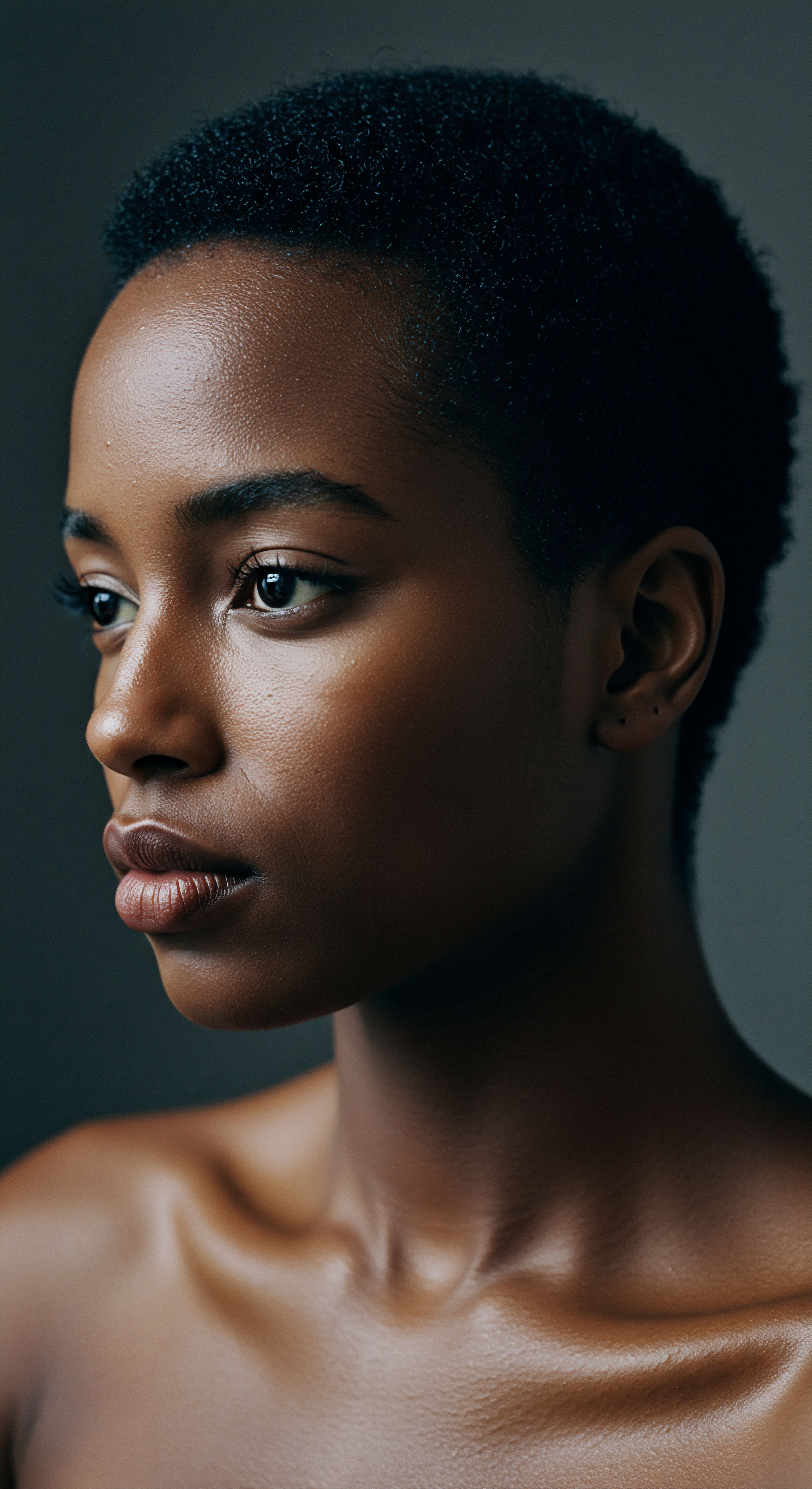
Why Friction Matters at Night?
The impact of friction on hair health, especially for textured strands, cannot be overstated. When hair rubs against a rough surface, the friction generates static electricity and mechanical stress. This process, repeated nightly, contributes to a phenomenon known as “pillow friction,” a silent saboteur of healthy hair.
The choice of sleep surface, whether a pillowcase or a head covering, thus plays a direct role in mitigating this daily wear and tear. Ancient communities, without the benefit of microscopes or trichology labs, observed the visible effects of certain materials on hair’s vitality, intuiting the protective qualities that science would later explain.
- Cuticle Abrasion ❉ Rough surfaces cause the hair’s outer layer to lift and chip.
- Moisture Loss ❉ A compromised cuticle struggles to retain the hair’s natural hydration.
- Tangle Formation ❉ Friction encourages strands to intertwine and knot, leading to breakage during detangling.
The wisdom of selecting specific materials for nighttime hair care is not merely anecdotal; it is rooted in the physical interaction between hair and fabric. The texture, weave, and fiber composition of a material determine its friction coefficient and its ability to absorb or repel moisture. Fabrics with a smooth, tightly spun surface reduce friction, allowing hair to glide rather than snag.
Those that are less absorbent help hair retain its inherent moisture, a critical factor for maintaining elasticity and preventing dryness in textured hair. These simple yet profound principles guided the choices of our ancestors, leading them to certain natural fibers that offered unparalleled nocturnal sanctuary for their coils and curls.
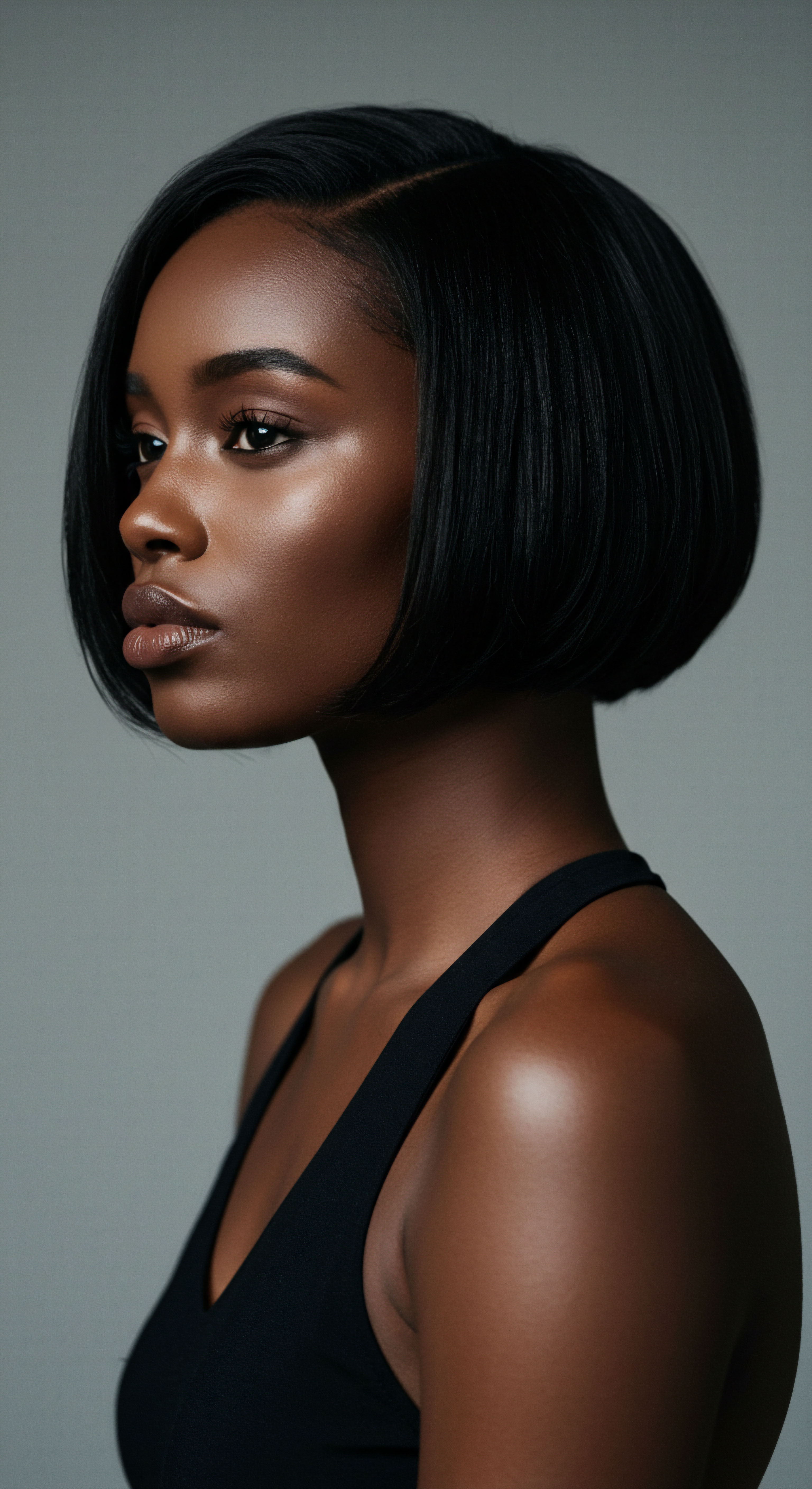
Ritual
Stepping from the foundational understanding of hair’s delicate nature, we now turn our attention to the practices themselves, the thoughtful gestures and material choices that transformed a simple act of rest into a ritual of hair preservation. For generations, the nighttime covering of hair was not merely a practical consideration; it was a deeply ingrained habit, a testament to the value placed on hair health and appearance. This section delves into the practical wisdom of our forebears, exploring the specific fabrics they turned to, understanding their properties, and recognizing the enduring legacy of these protective customs.
The quest for the ideal nighttime hair covering was, in essence, a search for materials that could offer a delicate balance ❉ minimizing friction, preserving moisture, and allowing the scalp to breathe. While modern synthetic options exist, historical communities relied on the bounty of the natural world, discerning which fibers held the most promise for their hair’s well-being. The fabrics that rose to prominence were those whose intrinsic qualities aligned perfectly with the needs of textured hair, often without explicit scientific knowledge, but through generations of careful observation and refinement.

Which Historical Fabrics Offered Superior Protection?
Among the array of natural fibers available through history, a few consistently appear as favored choices for hair protection, particularly at night. These materials, often cultivated and prepared with meticulous care, stood apart due to their unique textural and hygroscopic properties. Their adoption speaks to a collective understanding of what it took to keep coils and curls vibrant and strong.
- Silk ❉ Perhaps the most celebrated historical fabric for hair care, silk’s smooth surface and protein structure make it exceptionally gentle.
- Satin (Silk-Based) ❉ While modern satin can be polyester, historically, high-quality satin weaves were often crafted from silk, sharing many of its benefits.
- Fine Cotton ❉ Certain varieties of cotton, particularly those with a higher thread count and softer finish, offered a more breathable, albeit less slippery, alternative.

The Silk Standard Its Ancient Roots
When considering historical fabrics for hair protection, Silk stands as a paramount example. Originating in ancient China, the cultivation of silkworms and the production of silk textiles date back thousands of years, with evidence suggesting its use as early as 6000 BCE. Its legendary smoothness is not just a tactile pleasure; it is a physical property that directly benefits hair.
Unlike cotton or wool, which have microscopic barbs and uneven surfaces that can snag and pull at hair strands, silk fibers are long, smooth, and tightly woven. This creates a surface with very low friction.
Silk’s exceptionally smooth fibers allowed hair to glide, significantly reducing friction and preventing mechanical damage during sleep.
The protein structure of silk, primarily fibroin, also contributes to its protective qualities. Silk is known to be less absorbent than cotton, meaning it does not draw out the hair’s natural oils and applied moisture to the same extent. This is a considerable advantage for textured hair, which often struggles with maintaining adequate hydration. By allowing hair to retain its moisture, silk helps to preserve its elasticity, reduce dryness, and minimize breakage.
The widespread adoption of silk for head coverings and pillowcases across various cultures, from ancient Asian dynasties to European nobility, speaks volumes about its recognized benefits for both skin and hair. Even without modern scientific validation, its efficacy was understood through direct experience.
| Fabric Type Silk |
| Friction Level Very Low |
| Moisture Absorption Low |
| Breathability Good |
| Fabric Type Fine Cotton |
| Friction Level Medium-Low |
| Moisture Absorption Medium-High |
| Breathability Excellent |
| Fabric Type Linen |
| Friction Level Medium |
| Moisture Absorption High |
| Breathability Excellent |
| Fabric Type Wool |
| Friction Level High |
| Moisture Absorption High |
| Breathability Good |
| Fabric Type This table illustrates the general characteristics of historical fabrics relevant to hair protection. |
While silk often held a privileged status due to its luxurious nature and labor-intensive production, other materials also played their part. Certain types of Fine Cotton, particularly those with a high thread count and a soft, mercerized finish, offered a more accessible option. While cotton is more absorbent than silk, a tightly woven, smooth cotton could still provide a gentler surface than coarser textiles. The breathability of cotton was also a valued attribute, preventing scalp overheating.
However, the true advantage of silk, its ability to let hair glide, set it apart as the superior choice for mitigating friction-induced damage. The ritual of wrapping hair in these chosen fabrics, often in the form of headwraps, bonnets, or simple cloths, became a nightly safeguard, a testament to ancestral ingenuity in preserving the vitality of hair.

Relay
As we move from the foundational understanding and practical applications, we delve into the deeper currents of history and culture, recognizing that the choice of fabric for nighttime hair protection was not merely a matter of practicality, but often intertwined with social status, cultural identity, and scientific observation. The wisdom of historical fabric choices, particularly for textured hair, reveals a profound, if unarticulated, understanding of trichology that predates modern science. This exploration transcends simple material properties, inviting us to consider the interconnectedness of hair care with broader societal structures and the subtle yet powerful influence of empirical observation.
The historical preference for certain fabrics, especially silk, for hair protection finds compelling validation in contemporary scientific studies. Research into the tribological properties of textiles – the study of friction, lubrication, and wear – has consistently demonstrated silk’s superior performance in reducing friction against hair fibers. A study published in the Journal of Cosmetic Science, for instance, investigated the friction coefficient between human hair and various textile surfaces.
Their findings indicated that Silk Fabrics Exhibited Significantly Lower Friction Coefficients Compared to Cotton or Synthetic Blends, translating directly to less mechanical stress on the hair shaft during movement. This empirical data provides a modern lens through which to appreciate the intuitive wisdom of our ancestors, who, through trial and error, arrived at conclusions now supported by advanced material science.
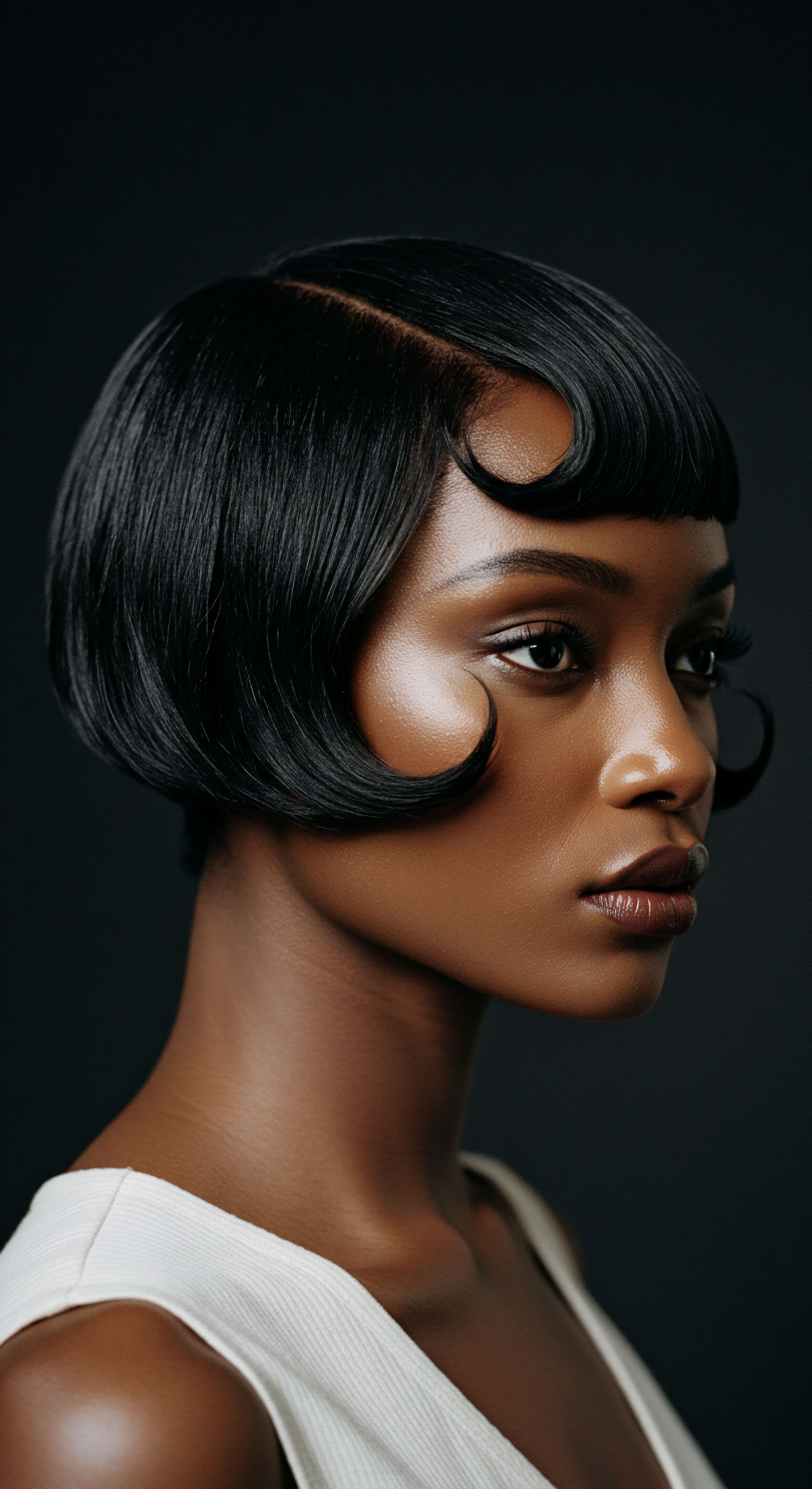
Did Cultural Practices Influence Fabric Choices?
Beyond pure material science, cultural practices played an undeniable role in the adoption and perpetuation of specific nighttime hair protection rituals. In many African and African diaspora cultures, head coverings, including those worn for sleep, held multifaceted significance. They were not only tools for hair preservation but also symbols of modesty, social status, and spiritual connection.
The fabrics chosen for these coverings often reflected availability, trade routes, and the value placed on certain textiles. While coarser fabrics like cotton were more readily available for daily use, finer, smoother materials, when obtainable, were often reserved for intimate garments or special protective uses, including nighttime wraps.
The choice of hair-protective fabrics was often shaped by a blend of practical observation, cultural significance, and material availability.
Consider the broader context of hair care in various historical societies. In many cultures, hair was considered a powerful extension of identity, spirituality, and even one’s life force. Protecting it, especially during the vulnerable state of sleep, was a practice imbued with deeper meaning.
The choice of a smooth, delicate fabric for a sleep bonnet or head wrap was thus a deliberate act of reverence for the hair, an acknowledgment of its fragility and its profound cultural weight. This reverence spurred innovation and selective use of materials that offered the greatest benefit.

The Unseen Damage of High Friction Textiles
The impact of high-friction textiles on hair health is a subject that continues to draw attention in modern trichology. While historical observations were qualitative, contemporary research offers quantitative insights into the damage caused by materials like coarse cotton or wool. Microscopic analysis of hair strands after repeated contact with rough surfaces reveals lifted cuticles, frayed ends, and even structural weakening of the hair shaft. This cumulative damage, though seemingly minor on a single night, compounds over time, leading to chronic dryness, brittleness, and breakage.
For individuals with textured hair, this issue is particularly acute. The natural curl patterns create more surface area and more points of contact with a fabric, amplifying the effects of friction. A study on the mechanical properties of African hair noted its inherent susceptibility to breakage due to its unique structural characteristics.
This vulnerability underscores why historical choices of low-friction fabrics like silk were not merely aesthetic preferences but highly effective, albeit empirically derived, solutions to a pervasive hair health challenge. The protective role of silk bonnets or wraps was, in essence, a sophisticated bio-mechanical intervention, long before the terms “bio-mechanics” or “trichology” existed.
| Textile Material Silk (Charmeuse) |
| Average Friction Coefficient 0.15 – 0.20 |
| Implication for Hair Minimal snagging, reduced breakage risk |
| Textile Material Cotton (Standard Percale) |
| Average Friction Coefficient 0.30 – 0.45 |
| Implication for Hair Increased friction, potential for cuticle damage |
| Textile Material Polyester (Common Satin) |
| Average Friction Coefficient 0.25 – 0.35 |
| Implication for Hair Better than cotton, but often less breathable than silk |
| Textile Material Wool (Coarse) |
| Average Friction Coefficient 0.50 – 0.65 |
| Implication for Hair High friction, significant risk of damage and moisture absorption |
| Textile Material Data values are illustrative, representing general findings in tribological studies of hair and textiles. |
The continuous use of protective fabrics at night, a ritual passed down through generations, served as a foundational element of hair care for many. It represents a remarkable convergence of practical necessity, cultural reverence, and an intuitive grasp of material science. The historical fabrics chosen for this nightly safeguard were not random selections; they were the result of accumulated wisdom, a relay of knowledge that continues to inform our understanding of optimal hair protection even today.

Reflection
As we gently close this exploration of historical fabrics and their profound role in nighttime hair protection, we find ourselves standing at the crossroads of ancient wisdom and modern understanding. The whispers of the past, carried on the delicate fibers of silk and the soft embrace of fine cotton, speak to an enduring human connection to our hair – a connection rooted in both its vulnerability and its power. These historical practices were not merely about preserving strands; they were acts of self-care, cultural affirmation, and an intuitive recognition of hair’s living essence. We are reminded that the most profound insights often lie not in complex scientific formulas alone, but in the careful observations and gentle rituals passed down through time, offering timeless lessons for nurturing our coils and curls.
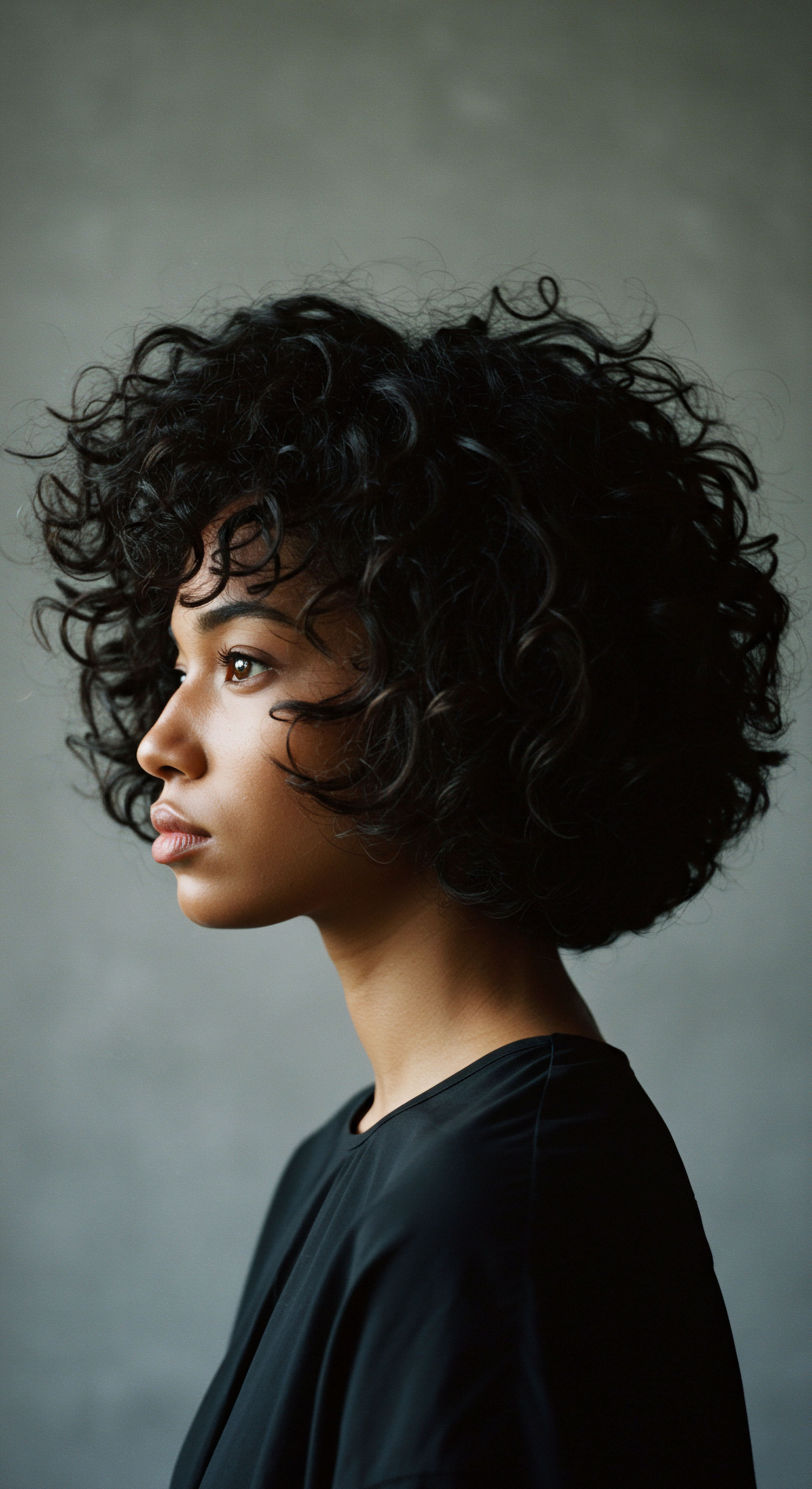
References
- Franbourg, A. Hallegot, P. Baltenneck, F. Freyssinet, J. M. & Bouillon, C. (2003). Current research on ethnic hair. Journal of Cosmetic Science, 54(6), 579-588.
- Khumalo, N. P. Gumedze, F. & Theron, A. J. (2010). Mechanical properties of African hair ❉ A quantitative analysis of tensile strength, elasticity, and breakage. International Journal of Dermatology, 49(12), 1412-1418.
- Robbins, C. R. (2012). Chemical and Physical Behavior of Human Hair (5th ed.). Springer.
- Wortmann, F. J. & Wortmann, G. (2017). Hair and Hair Care ❉ Science, Industry and Consumerism. Wiley-VCH.
- Grosicki, Z. (1995). Textile Fibres, Yarns and Fabrics. Woodhead Publishing.
- Gilligan, J. E. & Welling, L. C. (2008). Friction, Lubrication, and Wear of Hair. CRC Press.
- Byrd, A. D. (2001). Hair Story ❉ Untangling the Roots of Black Hair in America. St. Martin’s Press.